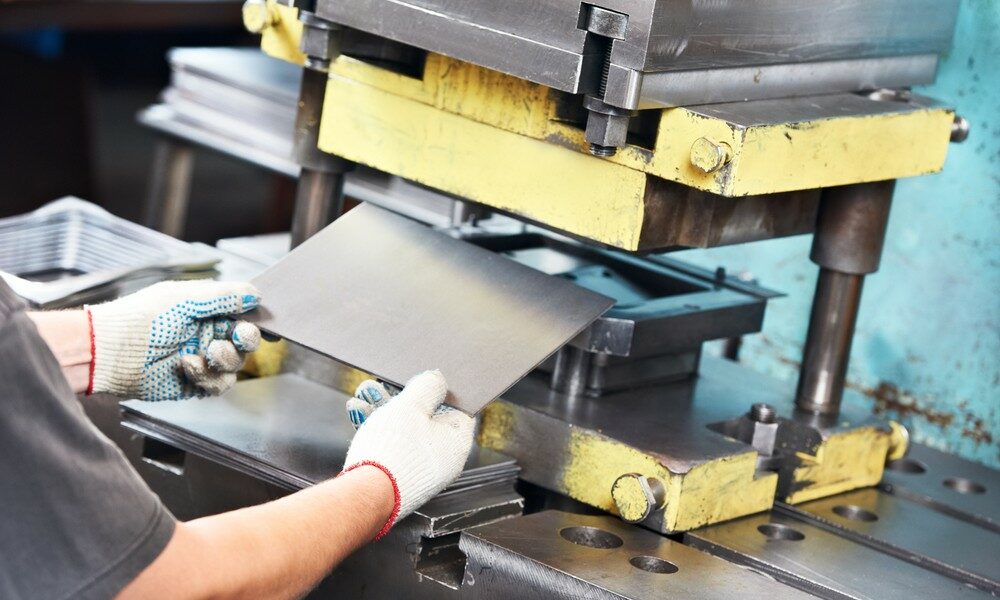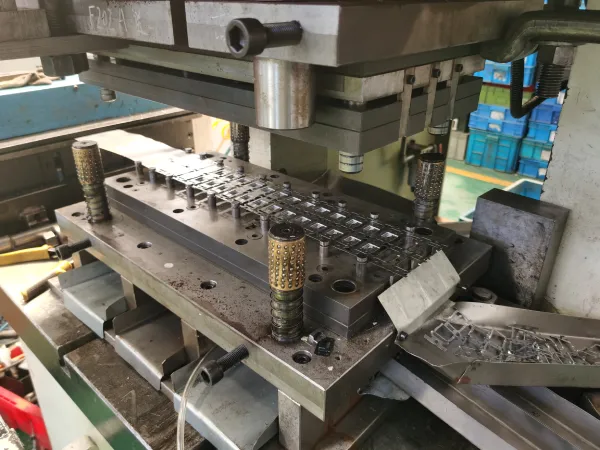Advanced Metal Stamping Approaches for Accuracy Manufacturing
Advanced Metal Stamping Approaches for Accuracy Manufacturing
Blog Article
Unleashing the Possible of Steel Stamping: Specialist Tips and Ideal Practices Exposed
In the world of steel marking, where precision and effectiveness power supreme, the quest to optimize procedures and unlock hidden capacities is a perpetual quest. As we navigate via the intricate world of metal stamping, a more detailed look at the intricacies of tooling layout, product selection, production efficiency, quality control, and emerging patterns assures a prize chest of insights waiting to be uncovered.
Tooling Layout Optimization
Enhancing tooling design is necessary for improving effectiveness and precision in steel stamping processes. A well-thought-out tooling style can considerably influence the high quality and cost-effectiveness of metal marking operations. By carefully taking into consideration factors such as product selection, die setup, and component geometry, manufacturers can enhance manufacturing processes and enhance general product quality.
One trick facet of tooling layout optimization is choosing the most ideal materials for the punches and dies utilized in the stamping process. Materials with high wear resistance and strength are favored to make certain long life and minimize tooling maintenance needs. Furthermore, pass away configuration plays a vital duty in attaining harmony and uniformity in stamped components. Proper die style can help prevent problems such as wrinkling, tearing, and excessive springback, resulting in greater production returns and reduced scrap rates.
In addition, enhancing component geometry through tooling layout can help minimize product waste and production time. By thoroughly shaping passes away and punches to match the desired part specifications, producers can attain tighter tolerances and boosted component quality. Overall, investing time and resources in maximizing tooling layout can lead to considerable long-lasting advantages for metal marking operations.

Material Option Methods
Tactically picking materials for steel stamping tooling is paramount for guaranteeing longevity and performance in manufacturing processes. When selecting materials for steel stamping applications, a number of vital aspects should be considered. The initial consideration is the sort of product being marked. Different products, such as light weight aluminum, stainless-steel, or copper, need particular tooling materials to ensure ideal efficiency and long life.
One more essential consider product choice is the predicted manufacturing volume - Metal Stamping. For high-volume production runs, tooling materials with remarkable wear resistance and durability, such as tool steels or carbide, are typically preferred to hold up against the rigors of constant stamping operations
Moreover, the complexity of the marking layout and the required precision additionally play a substantial duty in product selection. For intricate marking patterns or tight resistances, materials with high thermal conductivity and superb machinability, like beryllium copper or tool steel alloys, may be better to accomplish the desired results.
Production Performance Methods
To enhance producing output and lessen production expenses, applying reliable methods in metal marking processes is critical. Automated metal stamping equipments can do jobs with precision, consistency, and at a much faster price than hands-on labor, leading to enhanced efficiency and lowered cycle times.
One more strategy to boost manufacturing performance is through constant procedure renovation. Carrying out routine audits and performance analyses can aid identify traffic jams, useful source inadequacies, and areas for improvement within the steel stamping procedure. By assessing data and responses from these analyses, manufacturers can apply targeted remedies to streamline operations, boost throughput, and maximize overall performance.
Additionally, adopting lean manufacturing concepts, such as 5S approach and Kanban systems, can help get rid of waste, improve operations, and enhance overall efficiency in metal marking operations. By cultivating a society of constant improvement and equipping workers to add concepts for effectiveness gains, producers can open the full capacity of their steel stamping processes.
Quality Assurance Steps
Building on the foundation of reliable production techniques in metal stamping processes, guaranteeing stringent quality assurance procedures is necessary for keeping item criteria and customer fulfillment. Quality control in steel marking entails organized assessment, testing, and surveillance of the manufacturing processes to determine and rectify any inconsistencies or defects that can jeopardize the last item's stability (Metal Stamping). Carrying out actions such as routine tools maintenance, in-process assessments, and complete testing of finished components can assist identify concerns at an early stage and prevent pricey rework or item recalls
In enhancement to proactive high quality control measures, it is vital to develop clear high quality standards and requirements that straighten with consumer requirements. Routine audits and testimonials of high quality processes can help determine areas for enhancement and make certain uniformity in product top quality. By fostering a culture of high quality awareness amongst employees and supplying appropriate training on high quality control treatments, manufacturers can improve total item reliability and brand online reputation. Ultimately, purchasing durable high quality control gauges not just safeguards versus flaws and non-conformities yet also leads the way for sustained organization development and client commitment.

Ingenious Metal Stamping Technologies
Advancements in metal marking innovations have actually changed the manufacturing market, improving performance and accuracy in the manufacturing process. One of one of the most substantial advancements is the growth of servo press technology. Servo presses offer unparalleled control over the marking procedure, enabling get redirected here changes in force, dwell, and rate time with extraordinary precision. This degree of control causes higher quality components, reduced downtime for tooling changes, and increased total efficiency.

Furthermore, the fostering of additive manufacturing strategies in metal stamping, such as 3D printing of die parts, has streamlined the tooling style and manufacturing procedure. This strategy enables better design flexibility, quick prototyping, and price savings in tooling production. By leveraging these cutting-edge technologies, suppliers can open brand-new degrees of effectiveness, top quality, and competitiveness in the steel stamping industry.
Verdict
To conclude, the optimization of tooling layout, tactical material choice, efficient manufacturing methods, top quality control actions, and innovative innovations are vital for letting loose the complete possibility of metal stamping. By implementing these best practices and skilled tips, producers can improve productivity, enhance top quality, and remain affordable in the metal marking market. It is essential for business to constantly review and enhance their processes to attain success in this area.
As we navigate with the detailed world of metal marking, a better look at the complexities of tooling design, product choice, production performance, top quality control, and arising trends promises a prize trove of understandings waiting to be unearthed. A well-thought-out tooling style can dramatically affect the high quality and cost-effectiveness of steel stamping procedures.Structure on the structure of efficient production strategies in steel marking processes, making certain rigorous top quality control measures is imperative for maintaining product standards and consumer complete satisfaction. Quality control in metal stamping involves methodical examination, screening, and tracking of the production processes to determine and rectify any discrepancies or defects that could compromise the final item's stability.In final thought, the optimization of tooling style, strategic material selection, effective production methods, quality control actions, and cutting-edge innovations are essential for letting loose the complete possibility of metal marking.
Report this page